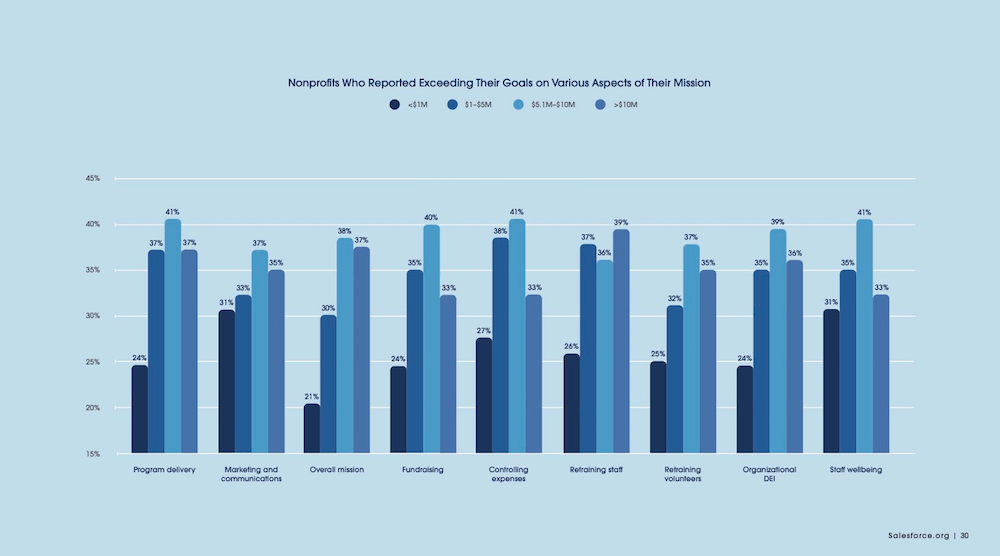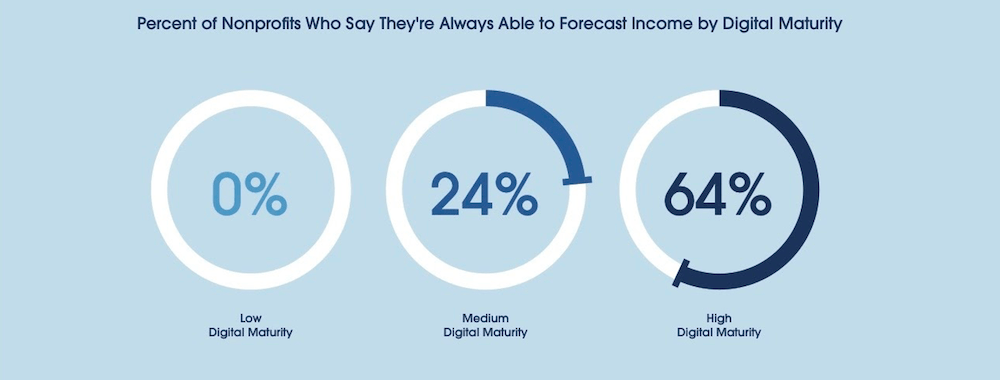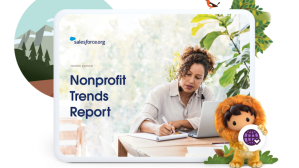New research from Salesforce.org highlights how nonprofits address new data strategies, exceed fundraising goals, and invest in technology to meet challenges
Nonprofits have faced unprecedented challenges since March 2020. The global COVID-19 pandemic shifted the world of giving off its axis, and the need for urgent support eclipsed typical nonprofit operations.
At Salesforce.org, we saw firsthand how nonprofit organizations around the world — including the 50,000-plus we work with as customers — had to completely reimagine their relationships with donors while meeting the shifting needs of their communities.
And yet, more than a third of the organizations we surveyed said their nonprofit actually exceeded their fundraising goals in the past year — the first key finding from our 2021 Nonprofit Trends Report, which is now in its fourth year. Interviews with 1,250 respondents around the world provide an updated, holistic picture of the current state of the nonprofit sector.

Bridging the gap between technology needs and access
And, while our collective struggle with COVID-19 continues, I’m encouraged by some of the emerging trends. I’m particularly optimistic about the increasing role that technology is playing in the conversation. In fact, our report’s second and third key findings show that investment in new technology was the primary way nonprofits changed their fundraising approach in the past year, followed closely by a renewed emphasis on the importance of a clear data strategy.
When it comes to data strategy, bridging the gap between technology needs and access is becoming a priority. We began publishing our Nonprofit Trends Report in 2018, when 78% of nonprofits were struggling to keep up with growing demands for their programs and services — but only 25% prioritized improving technology to meet those needs. In 2019, 85% of nonprofits said that technology was the key to the success of their organization, but by 2020, only 16% of nonprofits were ranked as “digitally mature.”
In this year’s report, digital maturity continues to matter: 64% of nonprofits in the “high digital maturity” category said they were able to forecast income accurately, compared to 0% in the “low digital maturity” category.

Nonprofits exceed fundraising goals with digital outreach
How are more than a third of nonprofits exceeding their fundraising goals in 2021, during such a challenging time? Nonprofits that use online platforms to better understand their donors have an edge. With gala fundraisers coming back slowly, if at all, new strategies like curated digital experiences that emphasize the power of storytelling are helping nonprofits be more successful.
Among the respondents in this year’s survey, 31% said that during the past 12 months, they’ve provided existing and prospective donors online access to a dashboard showing their donations in action. Of those who have made this change, 86% said it was impactful. In fact, 77% rate their marketing efforts as more successful than other nonprofits.
Solving problems with cloud-based technology
The report also shows nonprofits getting more comfortable using technology to find new and creative ways to address immediate issues — 22% now fall into the “high” category in our digital maturity index, while 72% are at a “medium” level of digital maturity. Bridging the gap between technology and meaningful impacts, however, comes down to choosing the right platform.
Investments in cloud-based technology are helping nonprofits pivot to meet both current and future challenges, and organizations are seeing those investments pay off. During the past 12 months, 36% of respondents reported investing in new technology such as a CRM, collaboration/productivity tools, analytics, artificial intelligence (AI), and automation. And among those who made an investment, 87% reported it as impactful.
Data is changing nonprofits’ approach to fundraising
As the effects of the pandemic continue to evolve, nonprofits are once again reconsidering how to raise funds.
While there may be some nostalgia for the old mechanisms of fundraising, nonprofits now recognize they will continue to need a virtual strategy in addition to their in-person strategy. Whether they are sending out mailers, organizing charity events, designing online fundraisers, or digitally connecting donors from abroad with recipients domestically in the United States, organizations are becoming increasingly aware that data is the connective tissue that enables this work.
Among our respondents, however, 76% said they still need to develop a data strategy for their organization, and 72% agreed or strongly agreed that donors expect remote access to key impact performance metrics.
With Giving Tuesday on November 30, and the holiday season in full swing, effective donor engagement is more critical now than ever. As we move into 2022, we can’t predict exactly what trade-offs nonprofits will need to make as global conditions continue to shift. What is clear, however, is that digital channels are here to stay.
See how Salesforce.org is enabling nonprofits’ changing needs at salesforce.org/nonprofit/.



















